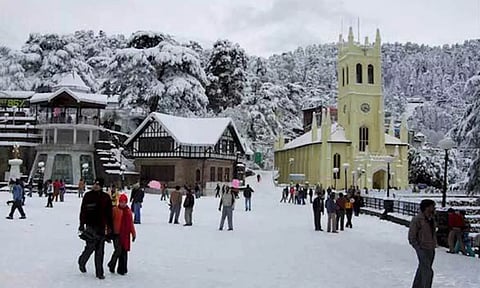

CHENNAI: The end of 2023 witnessed some of India’s most popular hill stations being swarmed by hordes of tourists whose influx in unprecedented numbers threw life out of gear for residents. A case in point happened to be the popular holiday spots of Manali and Shimla in Himachal Pradesh, small towns so to speak, that were completely unprepared to handle the volume of tourists that the holiday season throws up. Social media portals like X (Twitter) and Instagram were chock-a-block with photographs of serpentine queues of tourist vehicles clogging the main entry roads of these villages, and the inadequately-manned police forces unable to bring a semblance of order to the logjam.
The impact of recent flash floods had also damaged infrastructure in many parts of HP, which depends on tourism for 7.89% of its GDP. Interestingly, hotels in Shimla witnessed an occupancy of just about 60% during New Year’s Eve on Sunday, which happened to be the lowest in 40 years. The rate was even lower than the occupancy the hotels had during the pandemic. A reason for this shortfall was that several revellers had dropped into the state just for the New Year celebrations and had returned back home, immediately following the celebrations, without booking any hotel rooms over the long weekend. Call it penny pinching, or just plain inconsiderate behaviour, but such instances of tourist influx seem to be doing more harm than good.
In fact, the local administrations of several major tourist hotspots in European nations, such as Italy, Spain and Greece are employing strict regulations to put an end to the bane of over-tourism. Take for instance, Venice, one of the most frequented vacation spots globally, which hosted 5.5 million visitors in 2019, which is literally 100 times the population of the city. The city’s government is now planning to limit the number of tourists through the introduction of an entrance fee for travellers who do not intend to stay the night. The proposal, which was announced several years ago by the Venice city council, is yet to be implemented. But officials have said it might come into force this year.
Similarly, the municipality of Baunei on Sardinia has restricted entry to various points on its beaches, where ‘picnic’ locations need to be reserved or paid for in advance. In line with the restrictive tourism policy, the islands of Lampedusa and Linosa, located between Sicily and North Africa have barred travellers from bringing their own vehicles to the holiday spots. These developments aren’t limited to Europe. Our neighbouring nation of Bhutan, whose tourism sector was hit hard by the pandemic, stuck to its guns and only reduced its daily Sustainable Development Fee (SDF) or tourist fee of $200 (Rs 16,634) to $100 (Rs 8,317) in a bid to attract international tourists. Indian tourists are required to pay Rs 1,200 per person per night.
Here in India, while proposing a policy of quality over quantity, Goa Chief Minister Pramod Sawant lamented how the coastal paradise was paying the price of over-tourism, with areas such as Fountainhas in Panjim, and Parra Road being turned into cannon fodder for social media. Needless to say, all states in India need to revisit their tourism policy, with a view to making the revenue stream equitable and sustainable for the denizens of the respective regions.